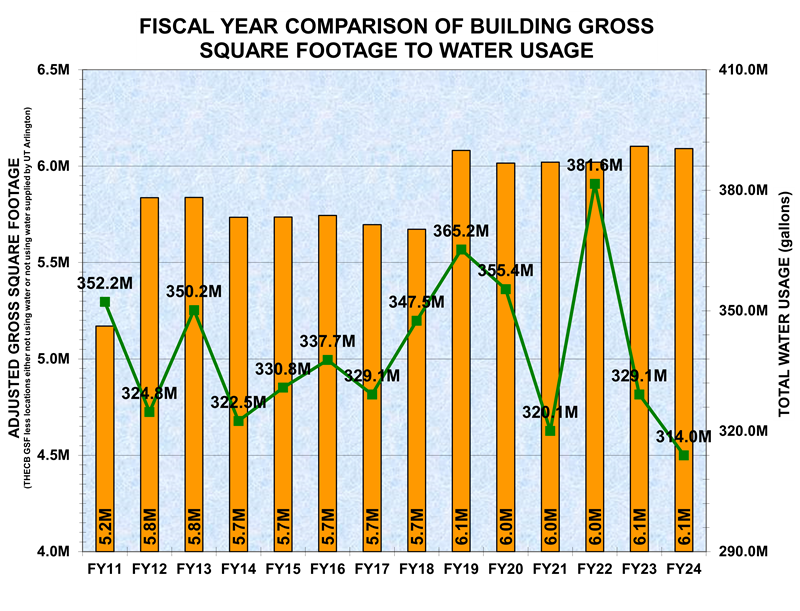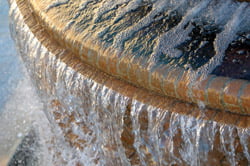Address:
601 W. Nedderman Drive, Suite 105
Arlington, TX, 76019-0108
Water Conservation

TAKING ACTION
MAXIMIZE WATER CONSERVATION AND EFFICIENCY

- UT Arlington’s 220,000 square foot Science and Engineering Innovation and Research Building (SEIR) opened in August of 2018. This building is equipped with state-of-the-art high efficiency mechanical systems and water-saving plumbing fixtures. The result is a research facility with a predicted energy usage of 30% or more below typical research buildings.
- UT Arlington has demolished more than 370 antiquated apartment units (average age of 50 years) and one 83-year-old residence hall on campus which have been replaced with new energy and water efficient residence halls on the west side of campus. Along with high efficiency mechanical systems, these residence halls have low-flow showers, lavatories, and toilets.
- Installation of low-flow shower-heads in 1,500 showers in the summer of 2011 to save one gallon of water per minute of use. Estimated savings are 27 million gallons of water annually.
- Retrofit of an average of five restrooms per year by installing low-flow toilets and sinks.
- Upgrade of heating and cooling system steam traps, which capture steam condensate and recirculate the collected water back through the system for reuse. Condensate returned to the boilers was increased from 60- 85%, saving millions of gallons annually.
- Installation of water-to-water heat exchanges in research lab activities that use domestic cold water.
- Installation of a weather-based, radio-transmit master control system that is recognized by the U.S. EPA WaterSense program for reducing irrigation water by projected 20 percent to 40 percent.
- Installation of a 28,000-gallon capacity rainwater collection system at the Engineering Research Building, which can hold up to one inch of rainfall from the building’s catchment area and capture condensate water from the air conditioning system during summer months. Captured water is stored for single reuse in landscape irrigation.
- Installation of a water collection system at the Community Gardens site
ECO-FRIENDLY DESIGN
TRANSITION OPEN SPACES TO WATER-WISE HABITATS
The University’s 2007 Campus Master Plan places high value on open, natural campus spaces that celebrate regional ecology and provide outdoor walkways and gathering places for the campus community. We incorporate water-wise habitat designs for new campus development The Engineering Research Building and The Green at College Park exemplify the master plan’s objectives for natural spaces and serve as role models for future campus construction activities. We are continuously replacing high-water, high maintenance plant selections with native and xeric-adapted plants and replacing traditional turf with reduced water use and “low mow” lawn turf.
MANAGE STORM WATER IMPACTS
The University addresses storm water impacts by adopting Storm Water Management Plan, which includes best management practices for protecting water from storm-water discharges, illegal dumping, and spills.